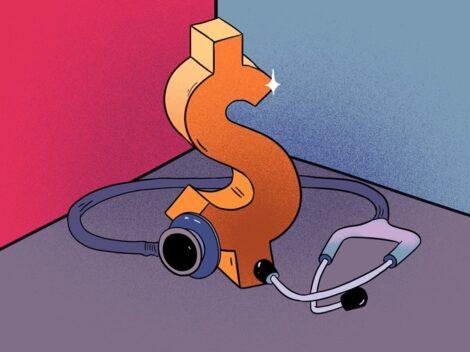Update: I made a conflation of paying Slack customers and paid Slack teams. Some of the later math sections have been updated to reflect the difference. Sorry everyone!
Morning Markets: Good morning, everyone. I hope the Polar Vortex doesn’t kill your Internet connection as we have a lot of horn to cover.
The government shutdown has thrown the IPO market into more of a turbulent mess than usual, and as The Washington Post’s Cat Zakrzewski wrote this morning, there’s more doubt and delays on the horizon as the government may shutter again. When the large crop of expected unicorn offerings may start simply isn’t clear.
Follow Crunchbase News on Twitter
But if the government stays open and the SEC can slog through its backlog, there are a host of companies looking to get public in quick order. And as the global economy cools, there’s a time factor at work. If the US stock market slips for economic, political, or more macro reasons, a herd of unicorns may need to cut their valuation expectations.
For unicorns and their heftier decacorn siblings, valuation declines could prove tricky; downside protection given to private investors in prior rounds can come into play, diluting less-privileged shareholders like employees and founders if firms exit at lower-than-expected prices. No one wants to endure a down round while trying to go public.
So, as the government unknots itself, all eyes are peeled for signals about which unicorns may go public first. It may be Slack, which just dropped a passel of new data. Let’s explore.
Slack’s Usage Numbers
This week Slack disclosed that it has 10 million daily active users, a useful vanity metric. The popular team-focused software company also noted that it has 1,500 apps “in [its] directory,” has penetration into 65 percent of the Fortune 100, and grew its paid customer count to over 85,000, which was up over 50 percent from the year prior.
What do those numbers mean? Well, we can trace the DAU number through time. Slack passed the 8 million DAU mark in May of 2018, and the 6 million DAU mark in September of 2017. That means it took Slack about 9 months to get from 8 to 10 million DAUs, and roughly 8 months to get from 6 to 8 million DAUs.
So, you could say that Slack’s growth of daily active users has slowed slightly. But, not that much, frankly, given that Microsoft has been pressing its Teams product into the market in hopes of retaining its spot near the center of corporate productivity. (A Microsoft spokesperson declined to provide a DAU figure for Teams for this article.)
Sadly, Slack has stopped reporting certain numbers over time, so getting a good grip on what the company is doing today in terms of revenue is increasingly opaque. Back when Slack was smaller it would report paid seats and annual recurring revenue (ARR) thresholds. Back in Summer 2016, Slack had 1 million paid seats and $100 million in ARR, for example. By September of 2017 (when the firm reached 6 million DAUs) those figures had swelled to 2 million paid seats and $200 million in ARR.
In May of 2018 Slack reported 3 million paid seats, but no ARR mark. You can do the math, however, which implies that Slack likely reached the $300 million ARR mark around the same time, provided that the firm’s per-seat rev stayed steady (it has, traditionally).
So what can we squeeze from the latest Slack figures? Something, thankfully. Slack had 50,000 paying teams (one company can have multiple paying teams) in September of 2017 when it had 2 million paid seats and $200 million in ARR. That works out to $4,000 in ARR per paying team. In May of 2018, Slack had 70,000 paying teams and 3 million DAUs. We reckoned its ARR at around the $300 million mark there, giving Slack about $4,300 in per-paying-team ARR.
If we split the difference between those numbers and presume that each of the 85,000 paying customers that Slack has today has a single-team userbase, then we can calculate a $350 million ARR figure, give or take. However, there can be multiple paid teams per paid customer, meaning that we’re undercounting Slack’s revenue as the average number of paid teams per customer is not 1-to-1. It’s higher than that.
If we presume something quite modest, like 1.25 paid teams per customer, and hold per-team ARR flat, Slack’s resulting ARR rises $438 million.
That’s about as far as I’d like to torture these particular tea leaves, but I think we have a roughly good idea of how big Slack is at the moment, based off of historical figures and new data.
Next for the popular shop is how it will explain competition to public investors, and how those same folks will value Slack’s revenue once we understand its margins and operating cost structure. More when we have it.
Top Image Credit: Li-Anne Dias.

Stay up to date with recent funding rounds, acquisitions, and more with the Crunchbase Daily.


![Illustration of robot nesting doll. [Dom Guzman]](https://news.crunchbase.com/wp-content/uploads/AI_robotics_Nesting_Doll-470x352.jpg)
![Illustration of a big hand handing $4B check to founder. [Dom Guzman]](https://news.crunchbase.com/wp-content/uploads/Rise_Of_Massive_Funding-470x352.jpg)


![Illustration of a guy watering plants with a blocked hose - Global [Dom Guzman]](https://news.crunchbase.com/wp-content/uploads/quarterly-global-3-300x168.jpg)
67.1K Followers